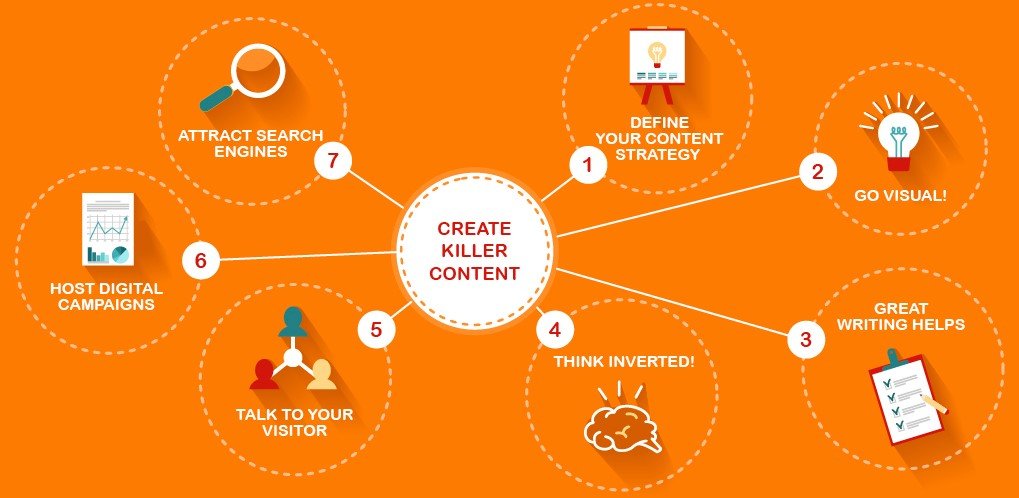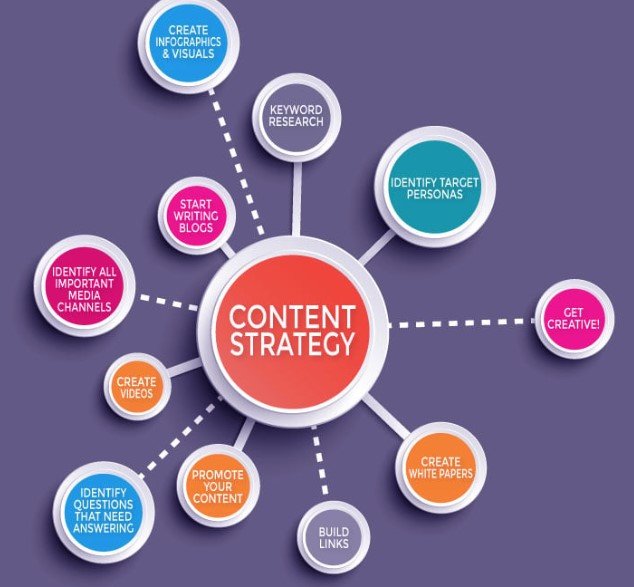Welcome to the dynamic world of content marketing! As we move into 2024, content marketing continues to evolve, offering exciting opportunities to connect with audiences. If you want to craft content that converts, this guide is for you. We’ll explore powerful strategies to boost your content marketing efforts, focusing on storytelling, SEO optimization, and audience engagement. Let’s dive in!
The Power of Storytelling
Storytelling is at the heart of great content marketing. Stories captivate, engage, and inspire action. Here’s how to harness the power of storytelling in your content:

1. Know Your Audience
Understanding your audience is crucial. Know their needs, preferences, and pain points. Create buyer personas to visualize your ideal customers. This helps tailor your stories to resonate with them.
2. Craft a Compelling Narrative
A good story has a beginning, middle, and end. Start with a hook to grab attention. Build tension or conflict. Conclude with a satisfying resolution that ties back to your brand or message.
3. Be Authentic
Authenticity builds trust. Share genuine stories about your brand, employees, or customers. Highlight real experiences and emotions. Avoid exaggeration or false claims.
4. Use Visuals
Visuals enhance storytelling. Use images, videos, infographics, and other visuals to make your content more engaging. Visuals help convey emotions and complex information quickly.
5. Leverage User-Generated Content
User-generated content (UGC) adds authenticity to your stories. Encourage customers to share their experiences with your brand. Feature their stories on your website, social media, and marketing materials.
SEO Optimization for Content Marketing
Search Engine Optimization (SEO) ensures your content reaches the right audience. Optimized content ranks higher on search engines, driving organic traffic. Here’s how to optimize your content for SEO in 2024:

1. Conduct Keyword Research
Identify relevant keywords your audience is searching for. Use tools like Google Keyword Planner, SEMrush, or Ahrefs. Focus on long-tail keywords that are more specific and less competitive.
2. Optimize On-Page Elements
Incorporate keywords naturally into your content. Optimize titles, headers, meta descriptions, and image alt texts. Ensure your content is well-structured with clear headings and subheadings.
3. Create High-Quality Content
Quality content is valuable, informative, and engaging. Write for your audience first, then optimize for search engines. Avoid keyword stuffing. Aim to solve problems, answer questions, and provide insights.
4. Improve Page Load Speed
Page load speed impacts SEO. Faster-loading pages provide a better user experience. Use tools like Google PageSpeed Insights to check your page speed and identify areas for improvement.
5. Build Backlinks
Backlinks from reputable sites boost your SEO. Create high-quality content that others want to link to. Reach out to industry influencers, bloggers, and websites for backlink opportunities.
6. Optimize for Mobile
Ensure your content is mobile-friendly. Use responsive design to provide a seamless experience across all devices. Mobile optimization is crucial as more users access content on their smartphones and tablets.
Engaging Your Audience
Engaging content keeps your audience coming back for more. Here are strategies to boost audience engagement:
1. Interactive Content
Interactive content increases engagement and provides a memorable experience. Examples include quizzes, polls, surveys, calculators, and interactive infographics. Interactive content encourages participation and sharing.
2. Personalization
Personalized content resonates more with your audience. Use data to tailor content to individual preferences. Personalized emails, product recommendations, and dynamic website content improve engagement and conversion rates.
3. Consistent Posting Schedule
Consistency is key. Develop a content calendar to plan and schedule your posts. Regular updates keep your audience engaged and coming back for more. Consistency also helps build trust and authority.
4. Social Media Engagement
Leverage social media to engage with your audience. Share your content across platforms and encourage interactions. Respond to comments, messages, and mentions promptly. Social media contests and giveaways can also boost engagement.

5. Use of Visual and Multimedia Content
Visual content is more engaging than text alone. Use images, videos, infographics, and GIFs to make your content more appealing. Live videos and webinars are also effective in engaging your audience in real-time.
6. Encourage Comments and Feedback
Invite your audience to share their thoughts and feedback. Ask open-ended questions and encourage comments on your blog posts and social media. Respond to feedback and use it to improve your content strategy.
Content Distribution Strategies
Creating great content is only half the battle. Effective distribution ensures your content reaches the right audience. Here are strategies to maximize your content distribution:
1. Use Multiple Channels
Distribute your content across various channels. This includes your website, blog, social media, email newsletters, and third-party platforms. Each channel has its unique audience and format, so tailor your content accordingly.
2. Leverage Email Marketing
Email marketing is a powerful distribution tool. Build and segment your email list to send targeted content. Personalized emails have higher open and click-through rates. Include clear calls to action to drive traffic to your content.
3. Collaborate with Influencers
Influencers can amplify your content reach. Partner with influencers in your industry to share your content with their audience. Influencer collaborations can include guest posts, social media takeovers, or co-created content.

4. Paid Promotion
Invest in paid promotion to boost content visibility. Use pay-per-click (PPC) ads, social media ads, and sponsored posts. Paid promotion helps reach a larger audience quickly and drives targeted traffic to your content.
5. Repurpose Content
Repurposing extends the life of your content. Turn blog posts into videos, infographics, podcasts, or social media posts. Repurposing helps reach different audience segments and maximizes your content investment.
6. Monitor and Adjust
Track the performance of your content distribution efforts. Use analytics tools to measure traffic, engagement, and conversions. Adjust your strategy based on data to optimize results.
Measuring Content Marketing Success
Measuring success helps refine your content marketing strategy. Here are key metrics to track:
1. Traffic
Monitor the number of visitors to your content. Use tools like Google Analytics to track page views, unique visitors, and traffic sources. High traffic indicates good content reach.
2. Engagement
Track engagement metrics like time on page, bounce rate, and social shares. High engagement shows your content resonates with your audience. Low engagement signals the need for improvement.
3. Conversion Rates
Measure how many visitors take desired actions, such as signing up for a newsletter, downloading a resource, or making a purchase. High conversion rates indicate effective content.
4. Lead Generation
Track the number of leads generated through your content. Use forms, landing pages, and gated content to capture lead information. Quality leads are more likely to convert into customers.
5. ROI (Return on Investment)
Calculate the ROI of your content marketing efforts. Compare the cost of creating and distributing content to the revenue generated. Positive ROI indicates successful content marketing.
6. SEO Performance
Monitor your content’s search engine rankings and organic traffic. Use tools like Google Search Console to track keyword rankings and click-through rates. Improving SEO performance boosts organic visibility.

Staying Ahead of Trends
Content marketing is constantly evolving. Stay ahead by keeping up with trends and adapting your strategy. Here are key trends to watch in 2024:
1. AI and Automation
AI and automation tools can streamline content creation and distribution. Use AI for content generation, personalization, and predictive analytics. Automation tools help manage and schedule content, saving time and effort.
2. Video Content
Video content continues to dominate. Invest in high-quality video production for tutorials, product demos, testimonials, and live streams. Short-form videos on platforms like TikTok and Instagram Reels are particularly effective.
3. Voice Search Optimization
With the rise of voice assistants, optimize your content for voice search. Use natural language, long-tail keywords, and answer common questions directly. Voice search optimization improves your chances of appearing in voice search results.
4. Interactive and Immersive Content
Interactive and immersive content, like augmented reality (AR) and virtual reality (VR), provide engaging experiences. Consider integrating these technologies into your content strategy to captivate your audience.
5. Sustainability and Social Responsibility
Consumers increasingly value sustainability and social responsibility. Highlight your brand’s efforts in these areas through your content. Authentic and transparent content on these topics can build trust and loyalty.
6. Data-Driven Insights
Use data to inform your content strategy. Analyze audience behavior, preferences, and feedback to create more effective content. Data-driven insights help tailor content to meet audience needs and improve results.
Conclusion
Crafting content that converts requires a blend of creativity, strategy, and data. By leveraging storytelling, optimizing for SEO, engaging your audience, and effectively distributing your content, you can achieve your marketing goals. Stay ahead of trends and continuously measure your success to refine your
